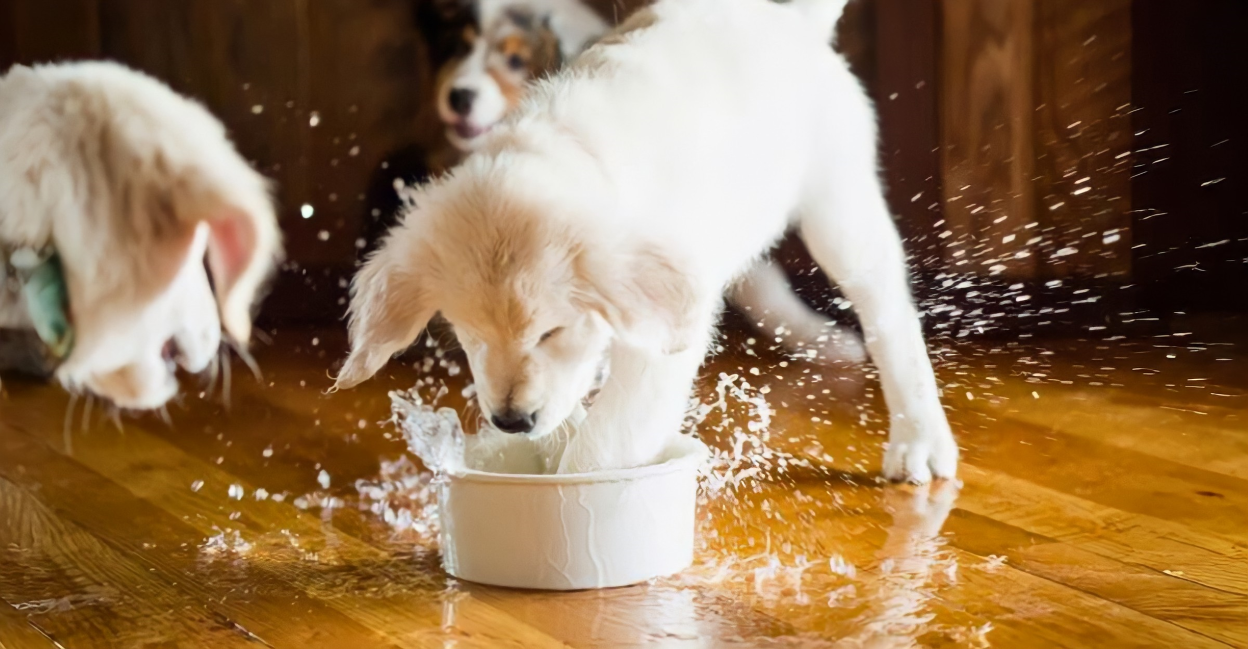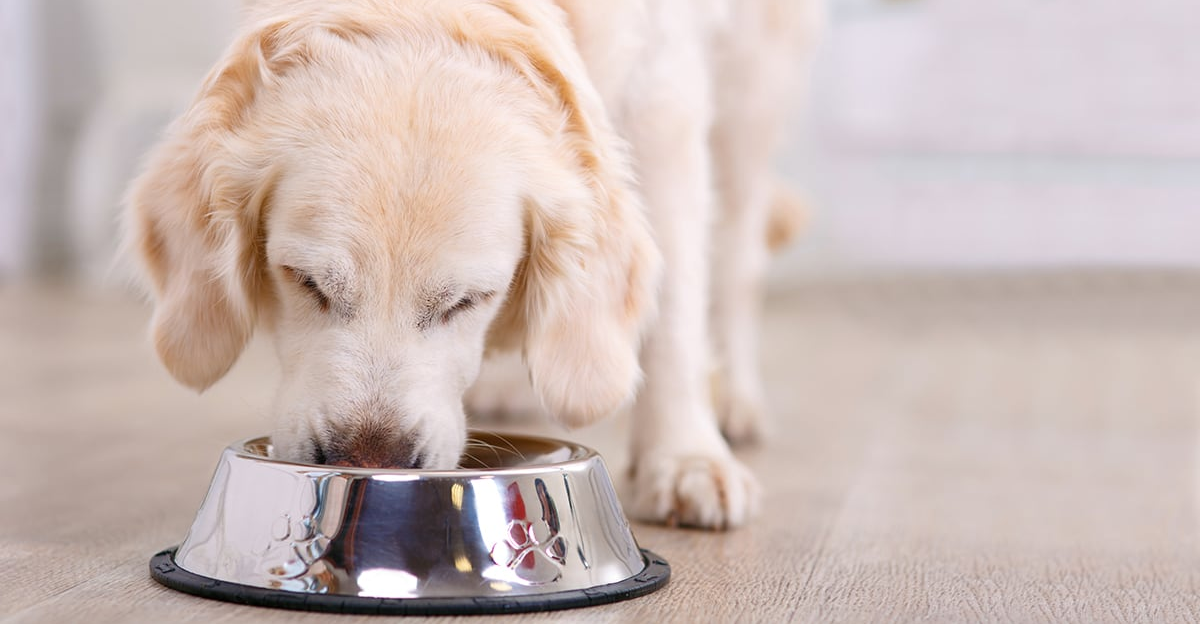
Dogs are our loyal companions, but their water bowls can harbor some seriously harmful microbes that could put your dog’s health at risk. If you’ve noticed a slimy ring or gunk around your dog’s water bowl, it’s likely a biofilm. Biofilm can expose dogs to harmful germs that may lead to illness. The good news? It’s easy to prevent! Let’s look at what biofilm is, its risk, and how to keep your pup’s water safe.
What is Biofilm? Understanding the Invisible Threat

Biofilm is a slimy, sticky layer of bacteria or fungi that forms on surfaces, often unnoticed by the naked eye. This microbial community thrives in moist, warm environments like your dog’s water bowl, where it can build up quickly. It’s highly resilient and tough to remove. The microbes within biofilm are encased in a protective matrix that shields them from regular cleaning and even antibiotics, making them difficult to eradicate. What’s even more alarming is that biofilm can grow undetected, so while your dog’s bowl may look clean, it could still harbor dangerous germs. Biofilm’s silent growth can create a breeding ground for a variety of harmful pathogens, including E. coli, Salmonella, and Leptospirosis, all of which pose serious risks to your dog’s health. Understanding biofilm is the first step in preventing its harmful effects.
The Causes of Biofilm Formation

Biofilm forms in moist, stagnant environments—perfect conditions for your dog’s water bowl. When the water is left standing for too long, especially in warm weather, bacteria begin to multiply and form this protective coating. The organic matter in your dog’s saliva and food, as well as the nutrients from their environment, feed these microbes. Regular rinsing won’t remove biofilm because it’s sticky and clings tightly to surfaces. Over time, it can grow larger, making it even harder to clean.
Biofilm’s Hidden Danger: Antibiotic Resistance

One of the most alarming aspects of biofilm is its resistance to antibiotics. The bacteria within biofilms are up to 4,000 times more resistant to treatment compared to free-floating bacteria. This means that even if your dog’s condition seems to be improving with antibiotics, biofilm could be harboring resistant strains that eventually cause recurring infections. Chronic conditions like ear infections, eye problems, and gastrointestinal issues are common signs that biofilm could be a hidden culprit.
The Dangers of Biofilm in Water Bowls: Bacteria Breeding Grounds

Biofilm’s structure makes it an ideal breeding ground for harmful bacteria. Inside these slimy colonies, dangerous pathogens like E. coli, Salmonella, and Leptospirosis can thrive undetected. These microbes can spread through contact with the contaminated water, putting your dog at risk for serious illnesses. Even just a small amount of contaminated water can be enough to trigger infections, leading to symptoms like vomiting, diarrhea, and fever.
Leptospirosis and Other Infections: Serious Health Threats

Leptospirosis, a bacterial infection linked to contaminated water, can be life-threatening for dogs. Symptoms include fever, vomiting, and kidney or liver damage. Biofilm serves as a perfect hiding place for the bacteria, protecting it from traditional cleaning methods. In fact, stagnant water that looks clear to the eye could still be teeming with Leptospirosis, making it easy for your dog to ingest harmful bacteria without even realizing it.
The Raw Food Paradox: A Hidden Risk in Diets

Raw food diets for dogs, while popular, can inadvertently contribute to biofilm formation. The bacteria in raw meat, such as Salmonella, can easily contaminate water bowls, especially if they aren’t cleaned regularly. This makes the combination of raw feeding and poor water hygiene a perfect storm for biofilm growth, increasing your dog’s risk of harmful infections.
Climate Change and the Growing Risk

Warmer temperatures, driven by climate change, are accelerating bacterial growth in standing water. Biofilm thrives in hot, stagnant environments, and climate change is creating more of these conditions—especially with urban flooding and extreme weather. This makes it even more urgent to pay attention to your dog’s water hygiene to prevent potentially life-threatening diseases.
The Clean Bowl Illusion: Why Visual Inspection Isn’t Enough

Just because your dog’s water bowl looks clean doesn’t mean it’s safe. Biofilm can hide in the crevices, making it invisible to the naked eye. Simply rinsing the bowl with water doesn’t get rid of the slime that contains harmful bacteria. Unless the bowl is thoroughly cleaned and sanitized, it can still harbor dangerous germs, putting your dog’s health at risk.
Proactive Cleaning: How to Defeat Biofilm Before It Forms

Regular, thorough cleaning is essential to prevent biofilm from building up in your dog’s water bowl. Wash the bowl with hot, soapy water daily and sanitize it with a pet-safe disinfectant at least once a week. Avoid letting water sit in the bowl for too long, and consider using stainless steel or ceramic bowls instead of plastic, as they are less likely to harbor biofilm. A clean water bowl is key to your dog’s health.
The Final Word: Keeping Your Dog Safe from Biofilm

Biofilm may seem like a small issue, but its potential health risks are huge. By taking simple steps—cleaning your dog’s water bowl daily, using the right materials, and staying informed—you can protect your dog from the harmful effects of biofilm. Don’t wait until it’s too late. Prioritize water hygiene and make sure your dog stays hydrated with safe, clean water.
Explore more of our trending stories and hit Follow to keep them coming to your feed!

Don’t miss out on more stories like this! Hit the Follow button at the top of this article to stay updated with the latest news. Share your thoughts in the comments—we’d love to hear from you!







